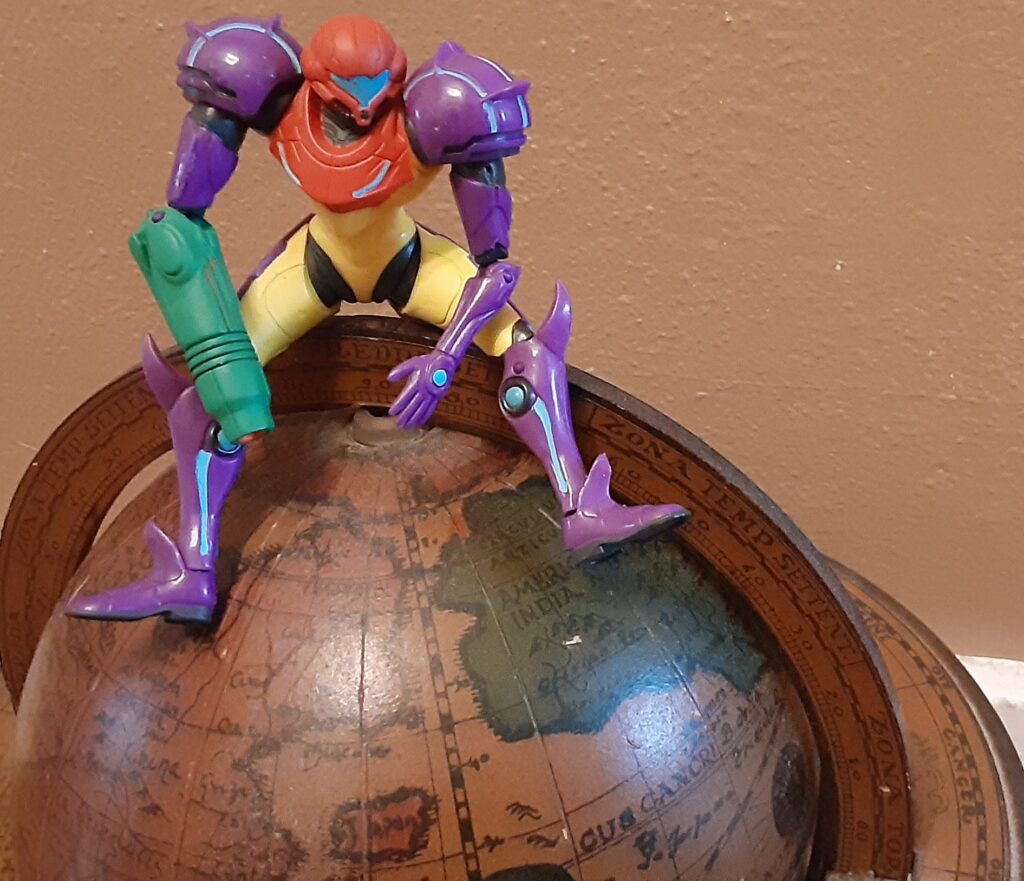
Metroid has amassed a whole canon of backstory in our present times but back in the late 1980’s, this was not the case.
Picture it…Peter Gabriel is serenading you via the cassette player in your Ford Taurus. You stop at a pay phone to call your buddy who informs you they are playing their shiny new NES game, Metroid. You tell them you will stop by after refueling for less than a dollar per gallon.
It’s the weird title screen music that draws you in, makes you want to press START. A meager story follows…something about destroying the Mother Brain on the planet Zebeth.
Anachronistic juxtapositions abound in the world of Metroid. Organic materials like stone and wood coexist with sleek metal, creating a world that is simultaneously futuristic and ancient but wholly alien.
And speaking of holy aliens, what’s with the bizarre statues that house your items and powerups? Imagine a newly hatched bird (translucent flesh, closed eyes, no feathers) with an armor suit. Were they worshipped by the departed denizens? Or are they images of the inhabitants themselves?
There’s a variety of terrain and enemies in this underground realm of Zebeth, and locomotion has evolved to meet the landscape. Music changes dramatically from a resounding hero’s theme to an alien, ambient collection of loosely affiliated sounds that always reminded me of Erik Satie in the way that it relaxingly unsettles.
You can let your imagination go wild (remember, it hasn’t atrophied from googling) in a minimalist world-building scenario like this, one that provides more questions than answers. It’s also one of the first video games to let you run around in a sequence determined only by items and hit points. A mosaic of pixels from a bygone era, Metroid is a perfect example of a world that’s hinted at instead of explained.